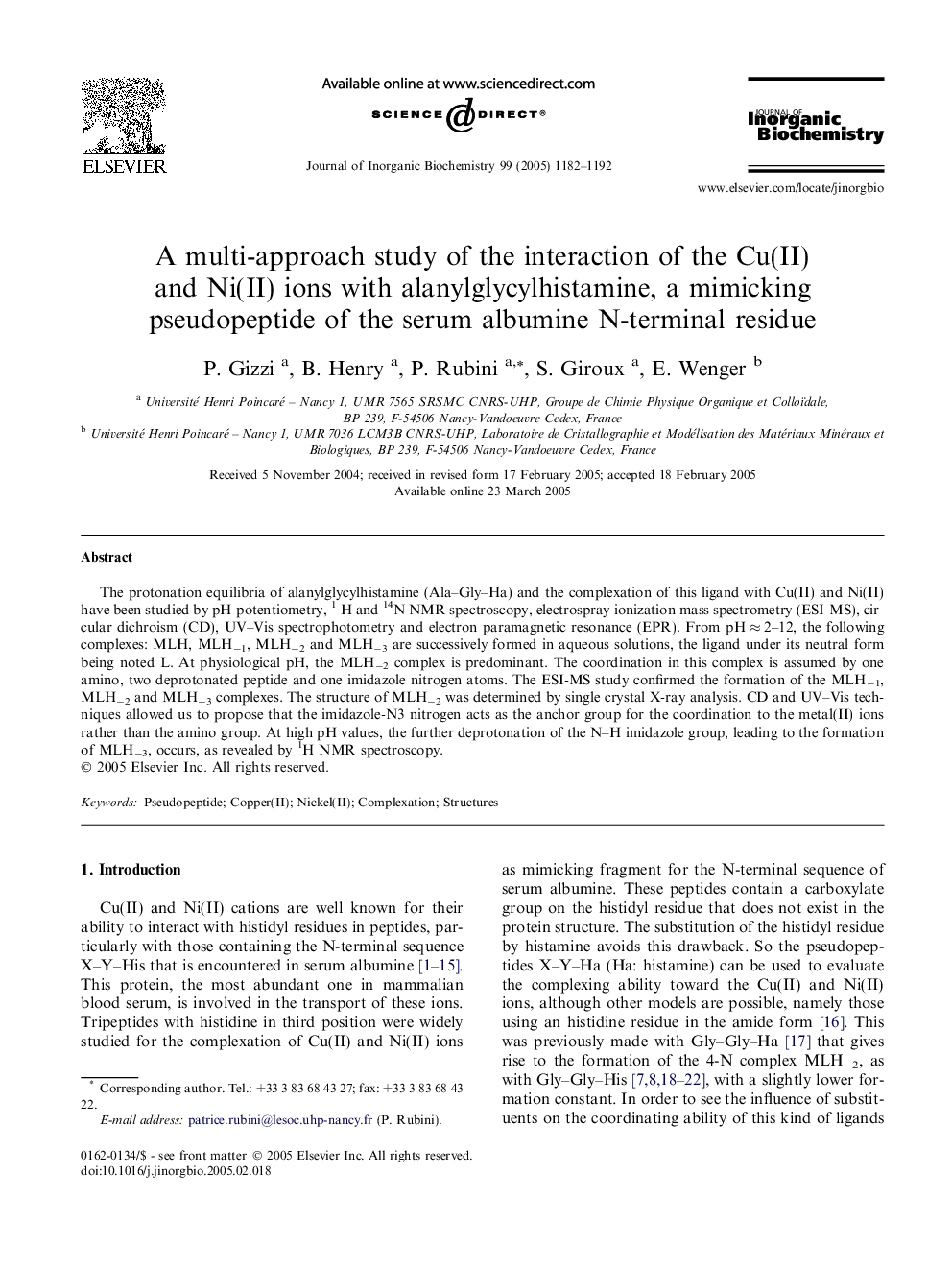| Article ID | Journal | Published Year | Pages | File Type |
|---|---|---|---|---|
| 10574329 | Journal of Inorganic Biochemistry | 2005 | 11 Pages |
Abstract
The protonation equilibria of alanylglycylhistamine (Ala-Gly-Ha) and the complexation of this ligand with Cu(II) and Ni(II) have been studied by pH-potentiometry, 1 H and 14N NMR spectroscopy, electrospray ionization mass spectrometry (ESI-MS), circular dichroism (CD), UV-Vis spectrophotometry and electron paramagnetic resonance (EPR). From pH â 2-12, the following complexes: MLH, MLHâ1, MLHâ2 and MLHâ3 are successively formed in aqueous solutions, the ligand under its neutral form being noted L. At physiological pH, the MLHâ2 complex is predominant. The coordination in this complex is assumed by one amino, two deprotonated peptide and one imidazole nitrogen atoms. The ESI-MS study confirmed the formation of the MLHâ1, MLHâ2 and MLHâ3 complexes. The structure of MLHâ2 was determined by single crystal X-ray analysis. CD and UV-Vis techniques allowed us to propose that the imidazole-N3 nitrogen acts as the anchor group for the coordination to the metal(II) ions rather than the amino group. At high pH values, the further deprotonation of the N-H imidazole group, leading to the formation of MLHâ3, occurs, as revealed by 1H NMR spectroscopy.
Related Topics
Physical Sciences and Engineering
Chemistry
Inorganic Chemistry
Authors
P. Gizzi, B. Henry, P. Rubini, S. Giroux, E. Wenger,
